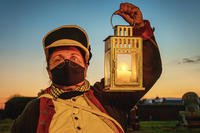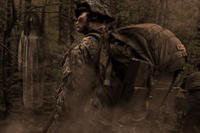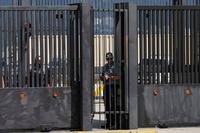Lewis Millett was already a seasoned combat veteran by the time he arrived in Korea in 1950. He was so dedicated to protecting freedom that he deserted the Army National Guard in 1940, when he thought the United States wouldn’t join World War II, and joined the Canadian Army instead.
When the U.S. finally entered WWII, he was transferred back to the U.S. Army in time to join Operation Torch and the Allied invasions of the Italian Peninsula. He went to college after the war, but a new war in Korea saw him back in service. That’s where Millett made history.
Millett joined the National Guard while he was still in high school in Massachusetts. After graduation, he joined the Army Air Corps and attended a U.S. Army Air Forces (USAAF) gunnery school. By 1940, it looked like the U.S. would avoid war in Europe, so he deserted and joined the Canadian Forces.
In 1942, he was transferred to the U.S. Army after the United States entered the war, and it was a good thing, too. The green soldiers landing in North Africa needed veteran soldiers to show them the way. He received a Silver Star for driving a burning half-track filled with weapons away from a mass of fellow soldiers before it exploded. He later used a similar half-track to shoot down an enemy fighter plane.
Millett knew how to fight, and that’s what saved his career when the Army found out he was a deserter. After landing at the Battles of Salerno and Anzio in Italy, Millett was court-martialed and convicted, fined and stripped of his leave. Then, the Army promoted him to second lieutenant.
When World War II ended, he went back to Maine, and like many veterans whose lives were interrupted by the war, he started college. While he was there, North Korean tanks started rolling into South Korea and routing American and allied forces there. Millett was soon on his way back to the battlefield.
While fighting in South Korea in 1951, he not only changed the outcome of one of the skirmishes there, he changed the name of the hill on which they were fighting. While U.S. troops still called the area Hill 180 -- Capt. Millett and his company were directed to assault an enemy position on top of that hill -- a platoon from the 2nd Battalion, 27th Infantry Regiment started taking heavy fire and became a shooting gallery for the communists.

Millett’s platoon fought its way to its pinned-down comrades and joined forces and fixed bayonets. The communists threw everything they had at the soldiers, including machine-gun and anti-tank fire. With Millett in the lead, they stormed the hill as their leader tossed hand grenades, using his rifle butt as a club and bayoneting the enemy the whole way up.
Although wounded by grenades, Millett completed the bayonet charge, and the men of the two platoons captured the hill and secured it for the United Nations forces. When the hand-to-hand fighting died down, almost half of the enemy were found to have been killed by bayonets. U.S. troops renamed the hill “Bayonet Hill.”
President Harry Truman presented Millett with the Medal of Honor for leading the charge up Bayonet Hill later that year. But Millett was far from finished. He stayed in the military, served in the Vietnam War and instructed small-unit tactical training programs until 1973. He died in 2009 at age 88.
-- Blake Stilwell can be reached at blake.stilwell@military.com. He can also be found on Twitter @blakestilwell or on Facebook.
Want to Learn More About Military Life?
Whether you're thinking of joining the military, looking for post-military careers or keeping up with military life and benefits, Military.com has you covered. Subscribe to Military.com to have military news, updates and resources delivered directly to your inbox.
















